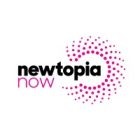

How CPG food brands determine existing equity during a design refresh.
While a brand equity study is one tool of many, it is imperative when undergoing a brand design refresh for CPG food brands. Category and competitive analysis, positioning exercises, and functional, intelligent design will all play significant roles in your redesign. Still, if you aren’t starting with a foundational understanding of your existing equity, you may as well be starting from scratch.
Three primary circumstances spur the decision to a design refresh:
1) The brand was built on a shoestring budget with a “good-enough-for-now” mentality and is rapidly making strides and ready for stronger positioning.
2) You’ve seen a certain level of success but have primarily been skating the middle. Newer competition has outperformed in the category.
3) With competition rising, keeping the brand modern and responsive to ever-changing consumer expectations is necessary to maintain the role of category leader.
Regardless of the motive, there is risk involved in a brand refresh. Your team has worked hard to build equity in your brand. Loyal consumers know and trust the product[s], and ultimately, they have made your business what it is today. You know you need to adapt to new category and consumer expectations, but the fear of losing consumers through lack of recognition is too real.
Good news! There is a way to maintain (strengthen even!) existing equity and gain market share through a brand refresh … base your strategy on understanding equity.
Do the work to determine your existing equity. It might not lie where you think!
The success of your brand refresh will hinge on a scale of evolution that is most effective for gaining brand awareness from new consumers without alienating existing ones. This question of tactical vs. transformative depends on how much equity you have and how much can be affected.
The primary way to “lose consumers” when undergoing a refresh is when they can’t recognize your product on the shelf. Over the past hundred years, your CPG predecessors have trained customers to look for specific cues at shelf–– identity, colors, imagery, and communication hierarchy–– that help them identify their products and category.
No matter the scale of your budget, you must invest in “some kind” of equity study before you begin a refresh. This can range from scrappy, like using survey monkey or leaning on your agency’s in-depth knowledge, to a more significant investment of a formal brand equity study. The reality is most folks close to their brand tend to give the wrong weight to certain attributes, especially the identity. I’ve seen brand equity studies where loyal consumers of a category leader couldn’t say the name of the brand but knew the product by the color on pack and imagery instead.
Understanding the role of each asset in the customer’s ability to recall your brand is how you will determine the range of evolutionary design. Something as simple as one color or image may tie your brand to purchasing behavior, and you have more room to evolve than you initially thought. Alternatively, you may have felt a complete versioning system overhaul was necessary when it would lead to more confusion within the category. Deciding what needs to change about your package design without fully understanding what is (or is not) working already will lead to wasted effort and money. What’s more, your refresh may fail.
You will gain additional value from an initial brand equity study by creating a baseline against which to test your new design, and to understand how far you have indeed gone away from the existing equity. Again, what may feel revolutionary and even “wildly transformative” to your team might still be easily recognizable to your customers because the new design has maintained the essential hard points they’ve come to associate with your brand. Do not overlook or tighten the belt around a brand equity study—it’s the key to your successful refresh.
Interesting in learning more about using research in your brand refresh? This article gives a higher level view.
GreenBook Directory lists brand equity data companies for you to review on your own.










